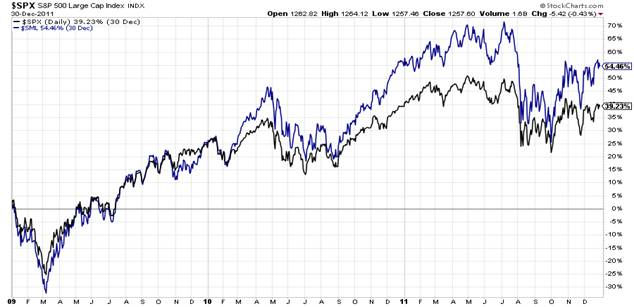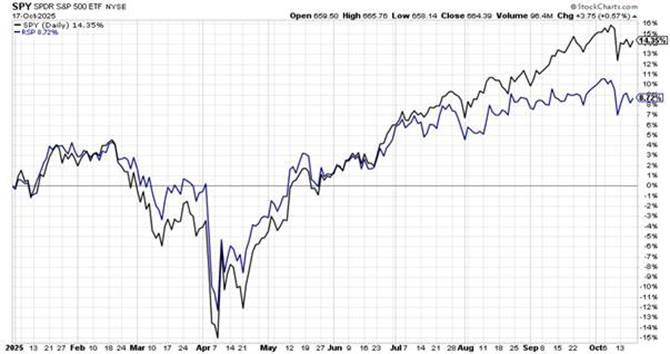The Stock Market has gone Stratospheric via this Measure
- cornerstoneams
- Nov 6
- 4 min read
Here in 2025 we have dedicated several editions to the topic of market valuations. We always like to say that price informs you of very little, but valuation tells all. Taking a market’s price and placing it into context, via a valuation process, offers an invaluable perspective for the price of the market in question.
If you are informed of the price of nearly anything, an immediate process begins of placing that price into a valuation context. Two shirts are offered at X price, with a third one free upon purchase of the two.
The consumer within immediately assesses whether there is value at that offered price. Price is not the be-all and end-all; it is placing that price into a valuation context that adds the insight and hence, the decision to purchase or to pass.
When observing a market, such as the stock market, we can see what collective market participants have done with prices via valuation measures to gauge, through a historical lens, whether the market is cheap, expensive, or somewhere in-between.
There are numerous ways to place price into a valuation context. Like any process when reviewing a market, or even economic landscapes, corroboration of several measures offers the clearest lens.
In previous editions on valuation topics, we have shared different approaches. Below we look at the stock market through a lens that we shared earlier in the year. We felt its behavior since that edition offered a worthwhile update.
This approach offers a 100-year perspective of the stock market relative to the size of the economy.
Total market capitalization of the stock market, think the total price of the whole market, as a percentage of the size of the economy, via nominal GDP, is an excellent high-level valuation tool.
This offers a broad view of how high, or low, the stock market is valued relative to the economic activity that ultimately supports the sales and profits of the component companies making up the stock market.
This is indeed a high-level view in that we are using two very broad inputs. The total price of the stock market coupled with the total size of economic activity underlines that this is a large macro perspective.
We offer a hat tip to our friend Ron over at the Chart Store for the calculation of the above data. For our part, we have annotated it via our red markings to draw attention to key points.
To begin, our red line begins at the top of the famous 1929 stock market peak.
As you can see by viewing the entirety of the above chart, that stock market paled in comparison to our late 20th and early 21st century stock market valuation levels when placing the total price of the stock market in the context of the underlying size of economic activity.
Our red line ends at the current day, which, via our red circle, denotes this measure is stratospheric relative to the long history displayed. In addition, we also added a red circle at the beginning of the year 2000, which was the peak of the 1990s internet bubble.
Placing them together offers easy visual context of where we stand currently with this valuation measure relative to that well-known stock market period.
The stock market, in the current day, easily eclipses the 1929 period and the late 1990s period, two well-recognized timeframes when the stock market was bid up to, for those times, stratospheric levels.
Again, relative to our current valuation backdrop, those periods were considerably lower than the current day.
Any time we discuss valuation levels of any market, we always emphasize that such studies offer near-zero value in terms of timing the price trend of the market in question.
There is no predetermined level whereby, if attained, collective market participants will agree to simply walk away and let market prices fall rapidly to something more in line with reasonable historical valuation levels.
What valuation views do offer is information as to what the quality of the water your capital is swimming in, if you will.
For our part, we are well aware that many valuation measures are chiming in with the above and are offering that the current stock market is indeed at stratospheric levels.
With this, we are extremely judicious in deploying capital into this market landscape.
This will certainly be a time period that will prove to be historically significant through the perspective of valuation levels. As high as valuation levels currently are, will they only move higher, and in so doing, yet again show just what poor trend timing tools they are known to be?
Conversely, are we peaking out, and with this, after the stock market decline, will we hear, yet again, general financial media offer how it was obvious stretched valuation levels simply could not be justified? Interestingly, before the market decline, said media offers little to nothing on the topic, using history as a guide.
For our part, we will continue to include valuation topics as future editions roll out, as this stock market storyline will certainly prove to be quite interesting, given time.
I wish you well…
Ken Reinhart
Director, Market Research & Analysis





Comments